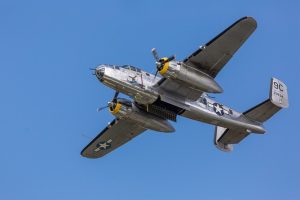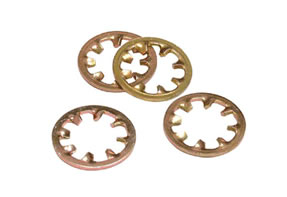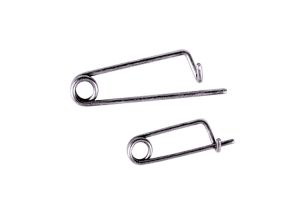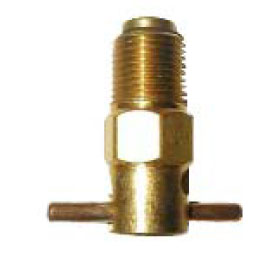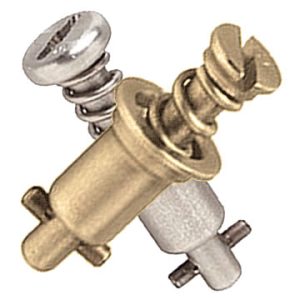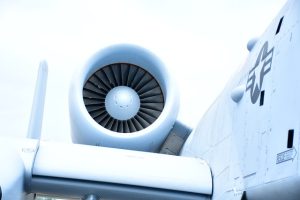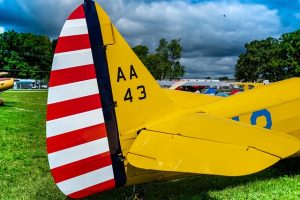
The wings on a typical airplane aren’t completely flat or fixed. Rather, they typically feature flaps. Some airplanes have ailerons or spoilers on their wings, for instance, whereas others have droop flaps on their wings. What are droop flaps exactly, and how do they work?
Overview of Droop Flaps
Droop flaps are lifting devices that are designed to improve the aerodynamic properties of an airplane’s wings at high angles of attack. They are connected to the wings via a hinge. When deployed, droop flaps will rotate downward. This, in turn, will improve airflow over the airplane’s wings at high angles of attack.
Where Are Droop Flaps Located?
Droop flaps are found on the leading edge of an airplane’s wings. They are classified as “leading-edge devices.” Wings have a leading edge and a trailing edge. The former refers to the front of the wings, whereas the trailing edge refers to the back of the wings. As leading-edge devices, droop flaps are located on the front of an airplane’s wings.
More specifically, droop flaps are often found between the engines and fuselage on the front of an airplane’s wings. The Airbus A380, for instance, features droop flaps in this location.
Droop Flaps vs Krueger Flaps: What’s the Difference?
Many people assume that droop flaps are the same as Krueger flaps. While they both consist of hinge-like devices on an airplane’s wings, though, they are different.
Droop flaps are designed to rotate downward when deployed. Pilots can deploy the airplane’s droop flaps, at which point these hinge-like devices will rotate downward. Krueger flaps, on the other hand, are designed to rotate away from the airplane’s wings when deployed.
Angles of Attack and Droop Flaps
To better understand why airplanes are designed with droop flaps, you must familiarize yourself with angles of attack. This is the angle at which an airplane’s chord line meets the wind. The amount of lift an airplane generates is influenced heavily by its angle of attack and speed. As the airplane’s angle of attack increases, it will generate more lift.
Droop flaps work by improving airflow at high angles of attack. They change the physical properties of the wings — specifically the front or leading edge — so that air can flow over them more easily. The end result is more lift and improved efficiency. Airplanes may feature other devices on their wings, but droop flaps are specifically designed to improve airflow at high angles of attack.
- SEO Powered Content & PR Distribution. Get Amplified Today.
- PlatoData.Network Vertical Generative Ai. Empower Yourself. Access Here.
- PlatoAiStream. Web3 Intelligence. Knowledge Amplified. Access Here.
- PlatoESG. Carbon, CleanTech, Energy, Environment, Solar, Waste Management. Access Here.
- PlatoHealth. Biotech and Clinical Trials Intelligence. Access Here.
- Source: https://monroeaerospace.com/blog/what-are-droop-flaps/
- :is
- 225
- 300
- a
- A380
- against
- AIR
- Airbus
- Airplane
- Airplanes
- amount
- an
- and
- ARE
- AS
- assume
- At
- attack
- away
- back
- Better
- between
- both
- but
- by
- CAN
- change
- classified
- completely
- connected
- deploy
- deployed
- designed
- Devices
- difference
- different
- do
- downward
- easily
- Edge
- efficiency
- end
- Engines
- exactly
- familiarize
- Feature
- Features
- fixed
- flat
- flow
- For
- Former
- found
- from
- front
- generate
- generates
- hand
- Have
- heavily
- High
- Hinge
- How
- HTTPS
- improve
- improved
- improving
- in
- Increases
- influenced
- instance
- IT
- ITS
- jpg
- leading
- lifting
- Line
- located
- location
- max-width
- May..
- Meets
- more
- must
- of
- often
- on
- or
- Other
- Others
- over
- People
- physical
- Pilots
- plato
- Plato Data Intelligence
- PlatoData
- Point
- properties
- rather
- refers
- result
- same
- So
- some
- specifically
- speed
- Sunset
- that
- The
- their
- Them
- These
- they
- this
- though?
- to
- TURN
- typical
- typically
- understand
- via
- vs
- What
- when
- whereas
- which
- while
- why
- will
- wind
- with
- Work
- you
- yourself
- zephyrnet

